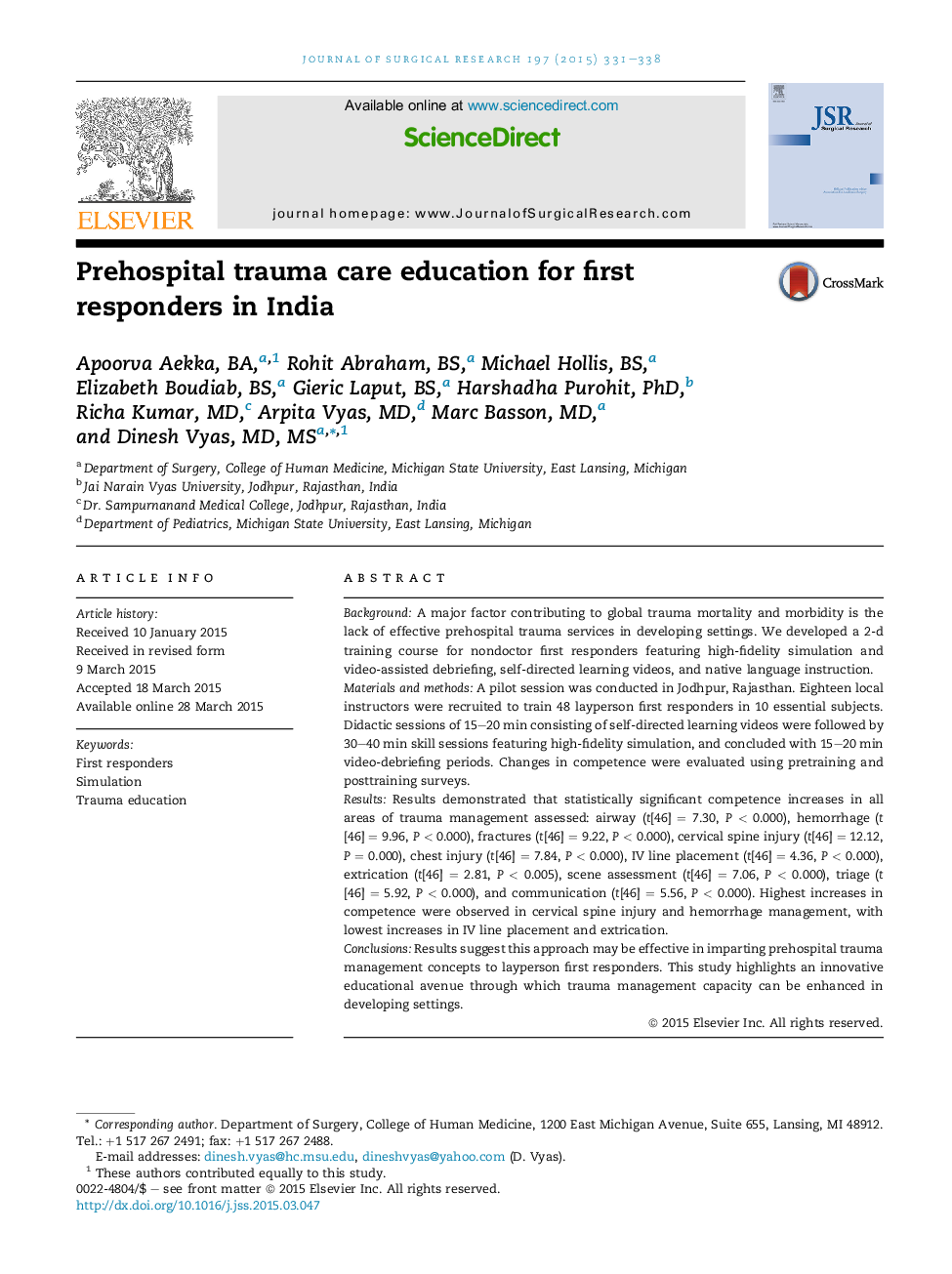| Article ID | Journal | Published Year | Pages | File Type |
|---|---|---|---|---|
| 4299765 | Journal of Surgical Research | 2015 | 8 Pages |
BackgroundA major factor contributing to global trauma mortality and morbidity is the lack of effective prehospital trauma services in developing settings. We developed a 2-d training course for nondoctor first responders featuring high-fidelity simulation and video-assisted debriefing, self-directed learning videos, and native language instruction.Materials and methodsA pilot session was conducted in Jodhpur, Rajasthan. Eighteen local instructors were recruited to train 48 layperson first responders in 10 essential subjects. Didactic sessions of 15–20 min consisting of self-directed learning videos were followed by 30–40 min skill sessions featuring high-fidelity simulation, and concluded with 15–20 min video-debriefing periods. Changes in competence were evaluated using pretraining and posttraining surveys.ResultsResults demonstrated that statistically significant competence increases in all areas of trauma management assessed: airway (t[46] = 7.30, P < 0.000), hemorrhage (t[46] = 9.96, P < 0.000), fractures (t[46] = 9.22, P < 0.000), cervical spine injury (t[46] = 12.12, P = 0.000), chest injury (t[46] = 7.84, P < 0.000), IV line placement (t[46] = 4.36, P < 0.000), extrication (t[46] = 2.81, P < 0.005), scene assessment (t[46] = 7.06, P < 0.000), triage (t[46] = 5.92, P < 0.000), and communication (t[46] = 5.56, P < 0.000). Highest increases in competence were observed in cervical spine injury and hemorrhage management, with lowest increases in IV line placement and extrication.ConclusionsResults suggest this approach may be effective in imparting prehospital trauma management concepts to layperson first responders. This study highlights an innovative educational avenue through which trauma management capacity can be enhanced in developing settings.
